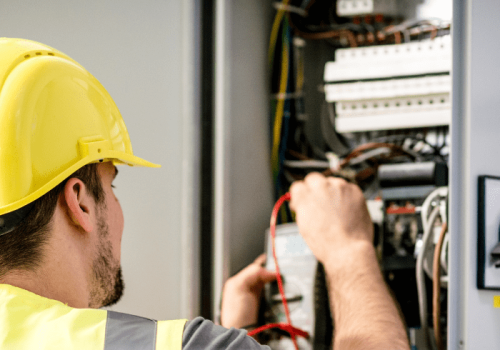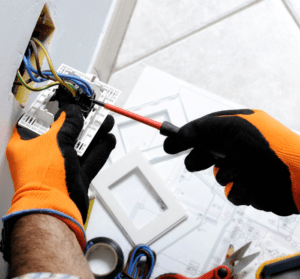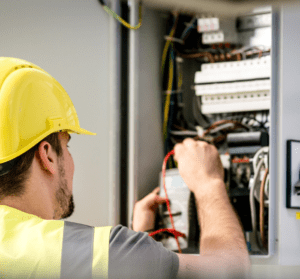5 Safety Tips for Home DIY Electrical Repair
DIY electrical repairs can be dangerous, with potential risks including fires, electrical shocks, and even fatal injuries. Many DIY enthusiasts underestimate the importance of safety protocols, leading to severe consequences.
Imagine dealing with an electrical issue and suddenly facing a fire or a shock. These accidents can result in significant damage and costly repairs. Fortunately, you can significantly reduce these risks with the right precautions.
By understanding and adhering to essential safety protocols, you can confidently and safely undertake your DIY electrical repair projects. In this guide, we’ll walk you through the critical safety tips that will keep you and your home safe.
Understanding Electrical Basics

Electricity, a fundamental part of modern life, is a powerful and potentially dangerous force. Comprehending the basics of electricity, including voltage, current, and resistance, is essential for anyone attempting DIY electrical repairs. Familiarizing yourself with common electrical terms, such as circuits, breakers, and outlets, can provide a solid foundation for safer practices.
Tip 1: Always Turn Off the Power
Before beginning any electrical work, ensure the power is completely turned off. Locate the main circuit breaker in your home and switch off the relevant circuit to prevent any accidental electrocution. Use a voltage tester to confirm that the power is off, adding an extra layer of safety before starting any electrical work.
Tip 2: Use the Right Tools
Using appropriate tools is crucial for both safety and efficiency. Essential electrical tools include screwdrivers, pliers, wire strippers, and a multimeter. Regularly inspect and maintain your tools to ensure they are in good condition, as damaged tools can pose serious risks. Investing in high-quality tools from reputable brands can further enhance safety and performance.
Tip 3: Wear Appropriate Safety Gear
Wearing appropriate safety gear, such as insulated gloves and safety goggles, is vital when handling electrical repairs. Insulated gloves protect against electrical shocks, while safety goggles shield your eyes from sparks and debris. Wearing appropriate clothing, such as rubber-soled shoes, can further enhance your safety. Additionally, having a fire extinguisher nearby can be a lifesaver in case of an emergency.
Tip 4: Know Your Limits
Recognize your limitations when it comes to electrical repairs. If a problem seems too complex or beyond your expertise, it is wise to call a professional electrician. Attempting to fix complicated issues without proper knowledge can lead to severe accidents and damage to your electrical system. Consider taking a basic electrical safety course to better understand your capabilities and limitations.
Tip 5: Follow Proper Procedures
Adhering to proper procedures ensures a safe and efficient repair process. Follow a step-by-step approach for common electrical repairs, such as replacing outlets or installing light fixtures. Utilize wiring diagrams to avoid incorrect connections, which can lead to shorts and other issues. Watching tutorial videos or reading detailed guides can also provide visual aids and enhance your understanding of the tasks.
Safety Should Be Your Top Priority.
Ensuring safety must be your primary concern when performing any DIY electrical repairs at home. By understanding the basics of electricity, turning off the power, using the right tools, wearing appropriate safety gear, knowing your limits, and following proper procedures, you can significantly reduce the risks associated with electrical work.
Remember, when in doubt, it’s always best to call a professional electrician like Power Pro Electric to handle more complex electrical repair issues. Prioritizing safety not only protects you and your loved ones but also ensures that your home’s electrical system remains in good working order. Stay safe and smart with your DIY electrical repairs!





